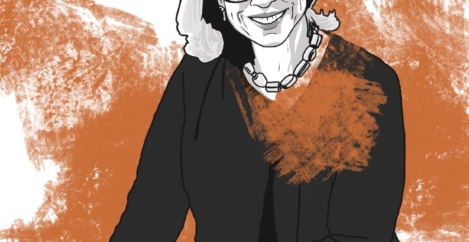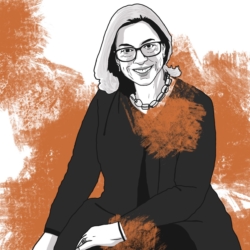October 13, 2023
The office needs to take on the characteristics of the city. Despina Katsikakis IN conversation
One of the unintended consequences of the era of online meetings is a chance to gain an insight into people’s actual lives. So it is that as Despina Katsikakis and I are talking, she spots my whippet Luna wandering into shot in the background and lets out an exclamation. She too has a whippet by her feet. And as a result, this abnormal, formal situation becomes a lot more normal and relaxed.
Despina is one of those people known to those in the know by just one of her given names. Partly this is down the relative rarity of her first name, but also because she was a prominent member of the DEGW design practice that shaped the way we talked about workplace and facilities management in the 1980s and 1990s. And still do.
It’s probably underselling the firm to describe it as a design practice. They were also researchers and influencers, so ahead of their time that it took a lot of people until 2020 to catch up. Whole passages of their work from as the 1990s and earlier don’t look out of place alongside the most progressive 21st Century thinking. In some cases, it’s still ahead.
In 2017, for Work and Place Journal Despina wrote an extended piece which presaged the seemingly overdue shift that was to come three years later:
“Disconnection from community and limited time with family are common stress factors for people in many large cities, that currently rely on commuting, forcing people to travel to the centre every day to work. Leveraging work delocalisation, changes to transport methods and business structures to generate diversified multi-centres, in which coworking spaces become neighbourhood services, thus reducing commute times and car usage will improve not only the work-life balance of millions of people but also will improve local communities and the growth of local economies…
“The workplace is now a hub for bringing colleagues together. It has become a ‘high-tech coffee shop’, where networked individuals meet, share, collaborate and develop ideas, strategies and solutions. As such, the workplace is increasingly being designed and managed less as a static backdrop to routine solitary work, and more as a ‘flexible’, ‘hotel-style’ facility that provides a high level of service and experience to its demanding ‘guests’.”
….
The rest of the interview is available for you to read free here















